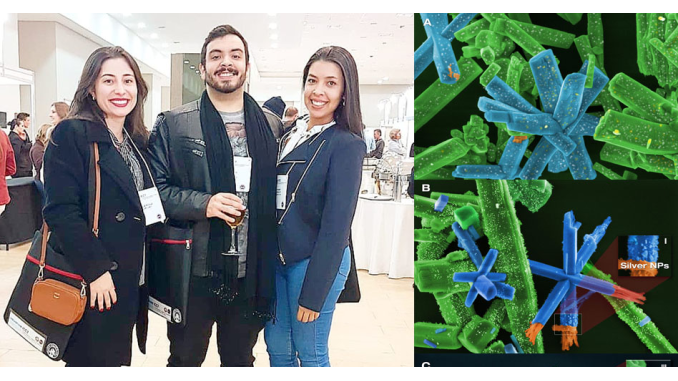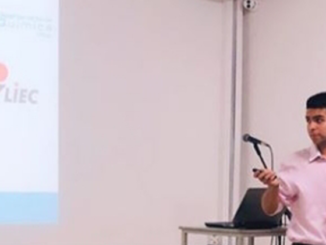
Trabalho apresentado pelos pesquisadores Camila Cristina de Foggi, Marcelo de Assis e Thaiane Robeldo Alcarde, do Centro de Desenvolvimento de Materiais Funcionais (CDMF – CEPID – FAPESP), foi premiado no simpósio de Advances in Bioceramics, durante a sétima edição do International Congress on Ceramics, realizado em Foz do Iguaçu, dos dias 17 á 22 de Junho.
O trabalho premiado como o melhor do simpósio é intitulado “Antifungal activity and biocaompatibility of silver tungstate (Ag2WO4) irradiated by different methods” e seu resumo (em inglês) pode ser conferido logo abaixo.
Based on the well-known activity of silver against a broad spectrum of microorganisms, this research has been focused on studying the antimicrobial potential of Ag2WO4 materials. Ag2WO4 was synthesized by coprecipitation method and irradiated by field emission gun scanning electron microscope (Ag2WO4: Electron – 15kV for 5 minutes) and femtosecond laser (Ag2WO4:NonFocused and Ag2WO4:Focused – Ti:sapphire laser; 30 fs; 800nm; 1kHz). A laser beam of 6 mm in diameter, at the 1/e2 point, and mean power of 200 mW was focused onto the surface of a pellet target of Ag2WO4 with a 75 mm lens. In order to obtain the focused sample, an 8mm lens was used. The antifungal effect was determined against Candida albicans ATCC 90028 biofilms, and evaluated by colony forming units per mL, confocal laser and scaning electron microscopy. Assessment of samples effects on metabolic mitochondrial activity of keratinocytes cells was performed by alamar blue assay and the morphology and viability was evaluated by confocal laser and scanning electron microscopy. All of the forms of Ag2WO4 used (Ag2WO4; Ag2WO4: E; Ag2WO4:NF and Ag2WO4:F) showed antibiofilm activity agains C. albicans, and the most efficient were Ag2WO4:NF and Ag2WO4:F. At the concentrations tested, the materials did not show cytotoxicity in keratinocytes. The samples presented antifungal activity and biocompatibility, and can be investigated for use in different biomaterials.




